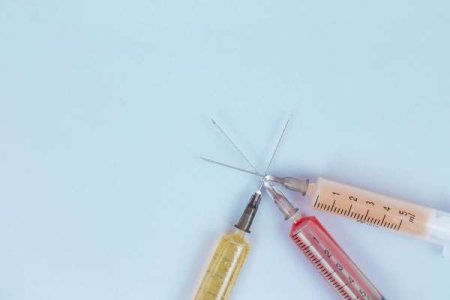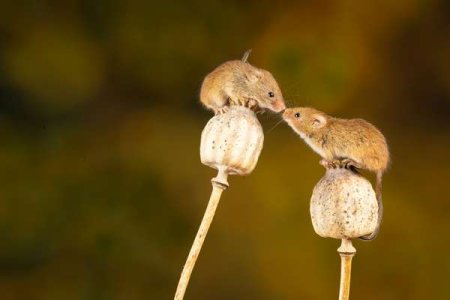Could this duo really add 16 years to your life and reverse brain aging? Here’s what you need to know!
- Replies 0
Imagine a future where a simple pair of injections could help you live well into your nineties—and not just live, but thrive, with a sharper mind and a stronger body.
It sounds like something out of science fiction, but a new breakthrough from Spanish researchers is bringing this tantalizing vision closer to reality.
At The GrayVine, we know our readers are curious, savvy, and always on the lookout for the latest in health and longevity. So, let’s dive into the science, the promise, and the big questions behind this so-called “fountain of youth” jab duo.
The Science Behind the “Jab Duo”: Meet Klotho, the Anti-Aging Protein
The star of this story is klotho—a protein named after Clotho, the Greek goddess who spun the thread of life. Klotho is naturally produced in our bodies, but, like so many good things, its levels decline as we age.
This drop is linked to many of the changes we associate with getting older: weaker bones, shrinking muscles, and, perhaps most concerning, a decline in cognitive abilities.
Researchers have long suspected that boosting klotho could slow or even reverse some aspects of aging. It was originally discovered by Japanese researchers who found out that the amount produced by mice could impact how long they lived.
Now, a team at the University of Barcelona has taken a bold step forward, using a pair of injections to deliver klotho directly into the bodies—and brains—of mice.

How Does the Treatment Work?
The treatment uses a harmless, specially engineered virus as a delivery vehicle. Think of it as a microscopic courier, carrying the genetic instructions for cells to make more klotho.
The researchers gave the mice two injections: one into a vein (to reach the body) and one directly into the brain (to bypass the blood-brain barrier, which usually keeps large molecules out).
Three groups of mice were tested:
- One group received the treatment at 6 months old (roughly young adulthood for a mouse).
- Another group got the jab at 12 months (middle age).
- A control group received a placebo.
The Results: Longer Life, Stronger Bodies, Sharper Minds
The findings were nothing short of remarkable—at least for the mice. Those injected at 12 months lived, on average, 31.5 months, compared to 26.3 months for the control group.
That’s a 20% increase in lifespan, which researchers say would be like adding 16 healthy years to an 80-year-old human’s life.
But it wasn’t just about living longer. The treated mice also:
What About the Brain? Could This Help Prevent Dementia?
One of the most exciting findings was in the brain. Both male and female mice showed evidence of new neurons forming in the hippocampus, a region crucial for learning and memory.
This hints at the possibility that klotho could help stave off age-related cognitive decline, or even forms of dementia like Alzheimer’s.
Not All Mice Benefited Equally
It’s important to note that the benefits weren’t universal. Female mice didn’t live longer, due to unrelated health complications, though they did develop stronger bones.
And, as with any early-stage research, the number of animals studied was small, which means the results need to be interpreted with caution.
Source: TEDx Talks / Youtube.
From Mice to Humans: How Close Are We?
Here’s where things get tricky. Mice are not humans, and many treatments that work wonders in rodents don’t pan out in people.
The researchers themselves caution that more studies are needed before human trials can begin.
“We now have viral vectors that can reach the brain after being administered intravenously, which would make it easier to safely transfer this therapy to humans,” said Joan Roig-Soriano, neuroscience expert and author of the new study.
However, the technology to deliver klotho to the human brain already exists, thanks to advances in gene therapy.
One option is to use viral vectors (like in the mouse study), while another is to develop a drug that delivers the klotho protein directly.
Both approaches have their own challenges, especially when it comes to safety and making sure the treatment reaches the right parts of the body.

The Big Picture: What Does This Mean for You?
While we’re not quite ready to roll up our sleeves for the “klotho jab” just yet, this research is a thrilling glimpse into the future of aging.
Scientists are working hard to turn back the clock—not just to help us live longer, but to help us enjoy more years in good health, with strong bodies and sharp minds.
For now, the best ways to support healthy aging are tried and true: regular exercise, a balanced diet, staying mentally and socially active, and keeping up with your doctor’s recommendations.
But keep an eye on this space—medical science is moving fast, and the next big breakthrough could be just around the corner.

We want to hear from you! If a treatment like this became available, would you be first in line? Or do you have questions or concerns about “anti-aging” science? Share your thoughts, experiences, and questions in the comments below!
It sounds like something out of science fiction, but a new breakthrough from Spanish researchers is bringing this tantalizing vision closer to reality.
At The GrayVine, we know our readers are curious, savvy, and always on the lookout for the latest in health and longevity. So, let’s dive into the science, the promise, and the big questions behind this so-called “fountain of youth” jab duo.
The Science Behind the “Jab Duo”: Meet Klotho, the Anti-Aging Protein
The star of this story is klotho—a protein named after Clotho, the Greek goddess who spun the thread of life. Klotho is naturally produced in our bodies, but, like so many good things, its levels decline as we age.
This drop is linked to many of the changes we associate with getting older: weaker bones, shrinking muscles, and, perhaps most concerning, a decline in cognitive abilities.
Researchers have long suspected that boosting klotho could slow or even reverse some aspects of aging. It was originally discovered by Japanese researchers who found out that the amount produced by mice could impact how long they lived.
Now, a team at the University of Barcelona has taken a bold step forward, using a pair of injections to deliver klotho directly into the bodies—and brains—of mice.

Scientists in Spain have developed a klotho-based treatment that extended mice’s lifespan by a fifth—the equivalent of adding up to 16 years for an 80 year-old human. Image source: Diana Polekhina / Unsplash.
How Does the Treatment Work?
The treatment uses a harmless, specially engineered virus as a delivery vehicle. Think of it as a microscopic courier, carrying the genetic instructions for cells to make more klotho.
The researchers gave the mice two injections: one into a vein (to reach the body) and one directly into the brain (to bypass the blood-brain barrier, which usually keeps large molecules out).
Three groups of mice were tested:
- One group received the treatment at 6 months old (roughly young adulthood for a mouse).
- Another group got the jab at 12 months (middle age).
- A control group received a placebo.
The Results: Longer Life, Stronger Bodies, Sharper Minds
The findings were nothing short of remarkable—at least for the mice. Those injected at 12 months lived, on average, 31.5 months, compared to 26.3 months for the control group.
That’s a 20% increase in lifespan, which researchers say would be like adding 16 healthy years to an 80-year-old human’s life.
But it wasn’t just about living longer. The treated mice also:
- Showed improved muscle strength and coordination
- Had denser, healthier bones
- Exhibited signs of new neuron growth in the hippocampus** (the brain’s memory center)
- Had less internal muscle scarring
What About the Brain? Could This Help Prevent Dementia?
One of the most exciting findings was in the brain. Both male and female mice showed evidence of new neurons forming in the hippocampus, a region crucial for learning and memory.
This hints at the possibility that klotho could help stave off age-related cognitive decline, or even forms of dementia like Alzheimer’s.
Not All Mice Benefited Equally
It’s important to note that the benefits weren’t universal. Female mice didn’t live longer, due to unrelated health complications, though they did develop stronger bones.
And, as with any early-stage research, the number of animals studied was small, which means the results need to be interpreted with caution.
Source: TEDx Talks / Youtube.
From Mice to Humans: How Close Are We?
Here’s where things get tricky. Mice are not humans, and many treatments that work wonders in rodents don’t pan out in people.
The researchers themselves caution that more studies are needed before human trials can begin.
“We now have viral vectors that can reach the brain after being administered intravenously, which would make it easier to safely transfer this therapy to humans,” said Joan Roig-Soriano, neuroscience expert and author of the new study.
However, the technology to deliver klotho to the human brain already exists, thanks to advances in gene therapy.
One option is to use viral vectors (like in the mouse study), while another is to develop a drug that delivers the klotho protein directly.
Both approaches have their own challenges, especially when it comes to safety and making sure the treatment reaches the right parts of the body.

The treatment involves two injections of a harmless virus carrying the genetic code for the klotho protein, one into the body and one directly into the brain. Image source: Nick Fewings / Unsplash.
The Big Picture: What Does This Mean for You?
While we’re not quite ready to roll up our sleeves for the “klotho jab” just yet, this research is a thrilling glimpse into the future of aging.
Scientists are working hard to turn back the clock—not just to help us live longer, but to help us enjoy more years in good health, with strong bodies and sharp minds.
For now, the best ways to support healthy aging are tried and true: regular exercise, a balanced diet, staying mentally and socially active, and keeping up with your doctor’s recommendations.
But keep an eye on this space—medical science is moving fast, and the next big breakthrough could be just around the corner.
Key Takeaways
- Scientists in Spain have developed a klotho-based treatment that extended mice’s lifespan by a fifth—the equivalent of adding up to 16 years for an 80 year-old human.
- The treatment involves two injections of a harmless virus carrying the genetic code for the klotho protein, one into the body and one directly into the brain.
- Treated mice lived longer and showed improved muscle strength, bone density and brain function, with new neurons forming in the brain.
- While promising, the treatment is still at the animal-testing stage, and further research is needed before it can be safely trialled on humans.
We want to hear from you! If a treatment like this became available, would you be first in line? Or do you have questions or concerns about “anti-aging” science? Share your thoughts, experiences, and questions in the comments below!






